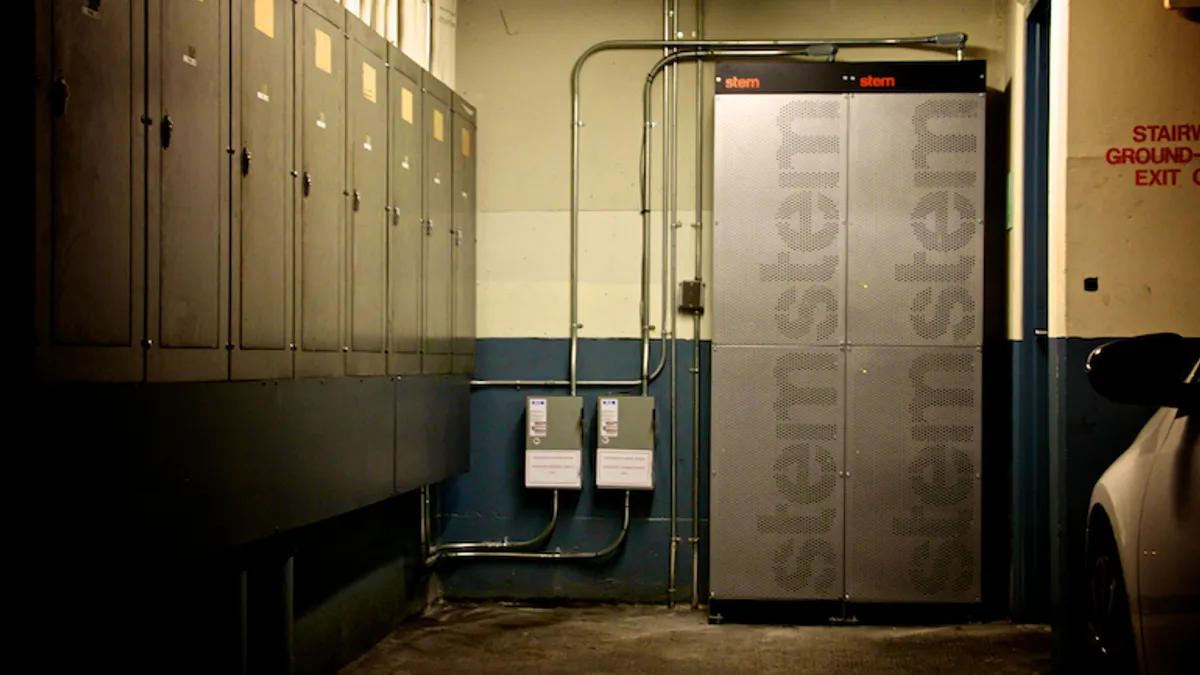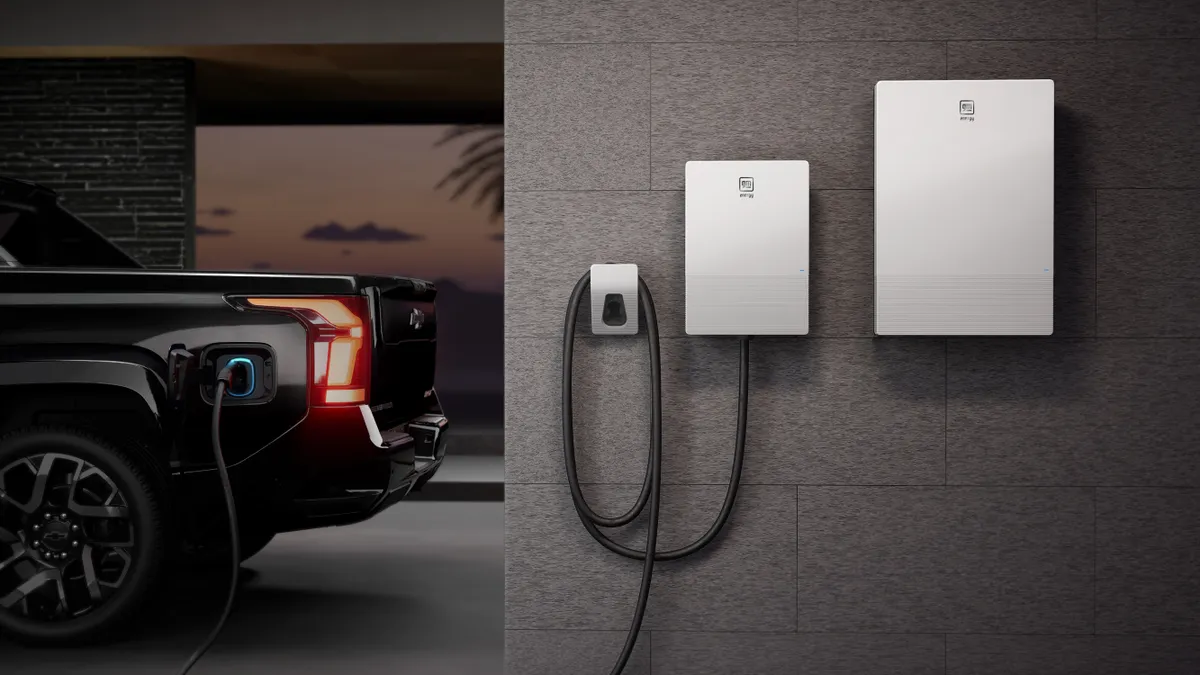Critics called 2015 a "banner year" for energy storage.
Now after a year of unprecedented growth, energy storage could be poised to best that performance, according to Navigant Research’s third quarter energy storage tracker.
“The North American market this year definitely has the potential to surpass the deployed capacity in 2015, especially considering how quickly new projects are being built today,” Ian McClenny, a research associate at Navigant, said.
Navigant projections show the North American storage market reaching just above 300 MW by year end.
A total of 221 MW (161 MWh) of energy storage was deployed in 2015 compared with 65 MW (86 MWh) in 2014, according to the Energy Storage Association.
Among the key drivers in the storage market, according to Navigant, are the proliferation of distributed, intermittent generation sources such as solar and wind power, which require increased load balancing, and the restructuring of electricity markets that will create new value streams for energy storage.
Among the notable developments so far this year is an increase in storage projects that use flow batteries and hybrid battery systems, the authors said, citing a Duke Energy project in North Carolina that combines a hybrid Aquion battery and a Maxwell Technologies ultracapcitor that will be used to fill both short and long duration energy needs from the single site at Duke’s Rankin substation.
The report also noted that distributed energy storage, which includes both behind-the-meter residential storage and community energy storage installations, accounted for about 14.2% of new the new storage installations so far this year, the highest percentage of any year yet.
Distributed energy storage systems (DESS), which includes C&I and microgrid installations, also accounted for 45.6% of the storage installations so far this year with the remainder, 54.4%, of the market comprised of utility scale installations.
In 2015, about 81% of the installations deployed in North America were utility-scale, and the remainder, about 19%, were distributed installations.
“This trend is expected to continue in the coming years as DESSs become increasingly cost-effective and productized, leading to more streamlined installation and opening new markets,” the Navigant researchers said.
In a separate report, Navigant noted that the U.S. residential market for energy storage is growing quickly, but that utility involvement will be crucial for further growth.
On an aggregate basis, Navigant said residential storage is on track to hit between 20 MW and 25 MW by year end, of which about 75% will be installed in 2016. By 2025, Navigant expects residential storage to total 750 MW.
Behind that growth is the expansion of the residential solar installations, falling system costs, and a desire to improve resiliency.
Though but little, residential storage is fierce...
Despite the rapid growth, Alex Eller, a research analyst at Navigant and one of the authors of the report, is quick to point out that the residential storage market is still small in absolute terms. The average residential storage system is about 3 kW to 4 kW (8 kWh to 10 kWh) compared with the average commercial and industrial system of about 100 kW (200 kWh).
With utility scale installations measuring in the megawatts and residential in the kilowatts, utility scale storage deployments may never overtake residential in terms of absolute capacity, but the residential storage market “has the potential to be more transformative to the grid overall,” Eller said.
Residential storage has the potential to alter the electric power market both in terms of the physical operation of the grid and in terms of the business models used to deploy storage installations and the relationships between utilities and their customers, Eller said.
But despite its potential, the residential energy market is still a developing market and in many cases, “the economics still do not justify the high upfront cost of installing these systems,” Eller said.
That is where utilities come in. A utility can gain more potential benefits by installing a residential energy system than an individual.
While an individual might have only a single potential benefit, such as deferring the purchase of more costly peak electricity, a utility could reap several benefits from a residential energy storage system, such as a reduction in overall peak system demand, the deferral of investment in wires or substations that could otherwise would be needed to accommodate higher demand, the ability to offer new products that can increase customer engagement, and the ability to have more visibility into customers’ usage patterns.
Some utilities already have programs aimed at facilitating the installation of residential storage systems. In Minster, Ohio, the municipal utility recently teamed up with Half Moon Ventures on installing a 3-MW solar array combined with a 7-MW storage system. Green Mountain Power in Vermont in May began installing Tesla Powerwalls for some customers.
In New York, Consolidated Edison in concert with SunPower and Sunverge in June announced a $15 million pilot program for a virtual power plant that involves the installation of solar panels and battery storage units in 300 homes as part of the state’s Reforming the Energy Vision (REV) program.
And a year ago, the Glasgow Electric Plant Board in Kentucky began installing storage devices supplied by Sunverge Energy as part of a demand response pilot program.
Those types of programs will be the “driving force” behind residential storage installations over the next couple of years, Eller said. He sees the residential storage market growing gradually over the next three or four years and then taking off. What is really going to drive the market, he said, is the expiration of renewable incentives like net metering, as well as the adoption of time-of-day rate structures.
That has already happened in some places, like Hawaii, which has done away with net metering, or Australia, which is phasing out the incentive, and providing an added impetus by enhancing the economics of storage. Cheap solar power can be stored and used later to defer the purchase of expensive evening peak power.
And Matt Roberts, executive director of the Energy Storage Association, notes rate reforms or storage programs are either under way or being looked at in states such as Arizona, which in January launched a storage pilot program; New Mexico, Minnesota and Wisconsin.
Those kinds of programs could provide the “foundation for further growth,” for the residential energy storage sector, said Roberts.





















